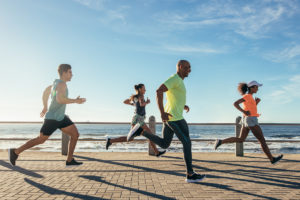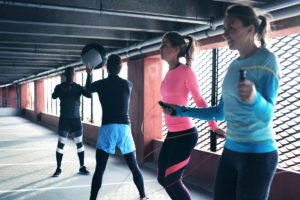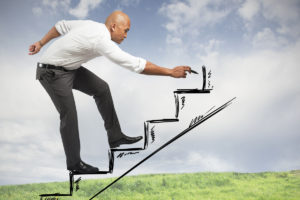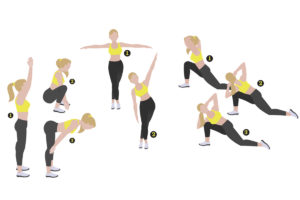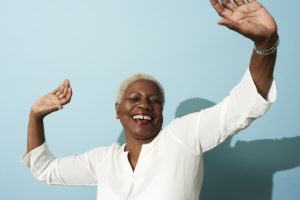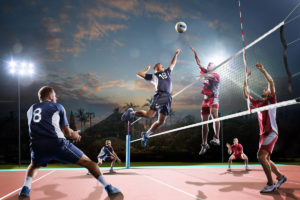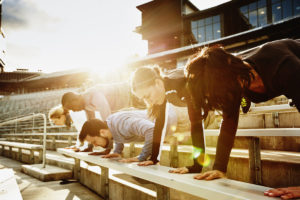Cardio/Aerobic
Gender Differences in Fitness and Brain Function
Many studies show that cardiorespiratory fitness improvements boost brain fitness in later life. New research in the Journal of Applied Physiology (2019; doi:10.1152/japplphysiol.01046.2018) reveals that effects may differ between men and women.
Exercise Promotes Brain Fitness in Everyone
Much research on cardiovascular training for brain fitness focuses on benefits to older adults (see below). A recent randomized clinical trial using parallel groups found that cardio training also increases executive function in adults as young as 20 years old.
Cardio Training and Weight Loss
A systematic review of 77 studies suggests that while both interval training and continuous moderate-intensity exercise are effective for fat loss, interval training may produce results in a more time-efficient manner. Researchers from Brazil and England conducted the review to identify what type of exercise—continuous moderate-intensity (MOD), high-intensity interval training (HIIT) or sprint interval training (SIT)—is best for weight loss.
Can Exercise Prevent Depression?
Fifteen minutes of vigorous activity or approximately 1 hour of moderate activity (like walking or gardening)—or a combination of light and vigorous physical activity—may significantly reduce risk of major depression, according to a study published in JAMA Psychiatry (2019; doi:10.1001/jamapsychiatry.2018.4175).
June 2019 Question of the Month: HIIT Programs
What is the status of HIIT programming at your facility? What programs, if any, are you offering, and are they growing or declining in popularity or remaining the same? Are they popular with a specific demographic group, or do they have broad appeal? Share your insights on HIIT programs and your experiences with them.
We want to hear from you!
Email executive editor Joy Keller, jkeller@ideafit.com.
UK Med School Includes Physical Activity Education
Lancaster Medical School in Lancaster, England, has been acknowledged throughout the United Kingdom and by the World Health Organization Europe for being the first medical school in the U.K. to integrate guidelines on how to prescribe physical activity. The initiative is referred to as the “Movement for Movement.”
Stair-Climb Your Way to Health
You may want to start recommending exercise snacking, particularly for people who believe they have no time for training. A few minutes of vigorous stair climbing, spread out in three bouts per day, three times a week, improved cardio fitness in formerly inactive young adults. McMaster University and UBC Okanagan researchers in British Columbia conducted the 6-week study.
Weighted Step-Training Benefits
If you’re looking for a different way to progress a client’s lower-body strength, consider adding a weighted vest to the training program. Specifically, wearing a progressively heavier weighted vest while stepping may be effective in boosting lower-body power and functional ability among older women.
The Fourth Trimester: Postpartum Exercise
It’s not over in 9 months. A new mother’s body keeps changing long after the baby arrives. Hormonal shifts, breastfeeding and risks like pelvic organ prolapse (see “3 Issues for Postpartum Exercisers,” below) complicate the weeks and months after childbirth.
Outdoor Workouts Without Equipment
It’s that time of year when springtime reinvigorates clients and participants, coaxing them to come out of hibernation and play. Why not leave the fluorescent lights behind and take class outside? Parks, fields, even parking lots are great places to lead outdoor workouts. There are options for everyone—and you don’t have to lug around a bunch of equipment, either. Maximize your time and space by incorporating simple, effective body-weight exercises that improve strength, speed, power and flexibility.
Kickin’ Cooldown: Post-Kickboxing Stretches
Kickboxing is an empowering class that builds confidence and improves balance, cardiovascular endurance, proprioception, strength and dynamic flexibility. It’s an effective total-body workout, especially when taught correctly, with key tenets in mind. Some say kickboxing is on the downswing; however, it’s possible that any decline in popularity is due, not to the format itself, but to how it’s being taught (or mistaught). It continues to be a staple in many facilities.
More Long-Term Aerobic Fitness Benefits
New research adds to growing evidence that current cardiovascular fitness levels affect heart disease risks as far ahead as 9 years in the future. “Even among people who seem to be healthy, the top 25% of the most fit individuals actually have only half as high a risk [of heart disease] as the least fit 25%,” said principal investigator Bjarne Nes, PhD, of the Norwegian University of Science and Technology, Trondheim, Norway.
Rewards of Lifelong Exercise
If you were to tell clients they could have the heart health of a 40-year-old and the muscular fitness of someone in their 20s when they were in their 70s, they’d likely want to know more. Well, you could tell them this: A recent study found that lifelong exercisers averaging 75 years old had the cardiovascular health typical of someone in their early 40s and the muscular health of a 25-year-old. The key is to exercise regularly, year after year.
Inside the Latest Physical Activity Guidelines
The more we move, the better we live. Even a few minutes of exercise is better than sitting still.
These are just two of the conclusions in the recent report from the 2018 Physical Activity Guidelines Advisory Committee, whose recommendations form a sound foundation for integrating exercise into our daily lives.
Neuromuscular Power Circuits
The dynamic motions of sport require peak power—that is, the most strength a muscular contraction can muster in one of these quick bursts. Sporting athletes depend on peak power for jumping, running, throwing, striking, swinging and kicking. Scientists prefer the term “neuromuscular power” (to just “power” itself) because neural factors—including motor unit recruitment, muscle fiber firing frequency and synchronization of a muscle’s contractile forces—are involved.
Sample Class: Let’s Have a Ball!
“Have a ball” with your class using this fun format, which incorporates exercise balls into cardiovascular and strength intervals. Each 8-minute round uses either a stability ball or a medicine ball, 4 minutes of high-intensity cardio training (combined), and about 4 minutes of strength-focused work (combined). For those who also enjoy a core challenge, this class delivers.
Warm Up With Rhythm
Dancing is a great workout that delivers as many smiles as it does full-body benefits. To share those benefits with participants, however, you don’t need to teach a whole dance class. A dance-inspired warmup will help patrons prepare for specific movements while setting a perfect tone for class.
In general, a good warmup includes
No-Equipment Outdoor Workouts
It’s that time of year when springtime reinvigorates clients and participants, coaxing them to come out of hibernation and play. Why not leave the fluorescent lights behind and take class outside? Parks, fields, even parking lots are great places to lead outdoor workouts. There are options for everyone—and you don’t have to lug around a bunch of equipment, either. Maximize your time and space by incorporating simple, effective body-weight exercises that improve strength, speed, power and flexibility.
Mindful Water Fitness in the Pool
The sensory-rich pool environment—soothing and simultaneously challenging—is an ideal setting for mindful movement and a welcome respite from digital stress. It’s also a place where people of all ages and ability levels can thrive. It comes as no surprise, therefore, that aquatic exercise posted the third-greatest growth among group exercise and training protocols in the 2017 IHRSA Health Club Consumer Report, with 12% facility member participation last year, up from 7% in 2014.
Cycling + Off-Bike Strength: Combo Class
Indoor cycling remains one of the hottest formats; it’s still credited with being a turnkey class that introduces men to the group exercise schedule. One reason indoor cycling is still viable is that it’s always reinventing itself. Over the past 20 years, it has evolved and survived many changes: new bike options, top-line educational programs and metric technology, to name a few. Currently, fusion classes are trending, and boutique studios are marketing their unique claims to a total-body workout.


